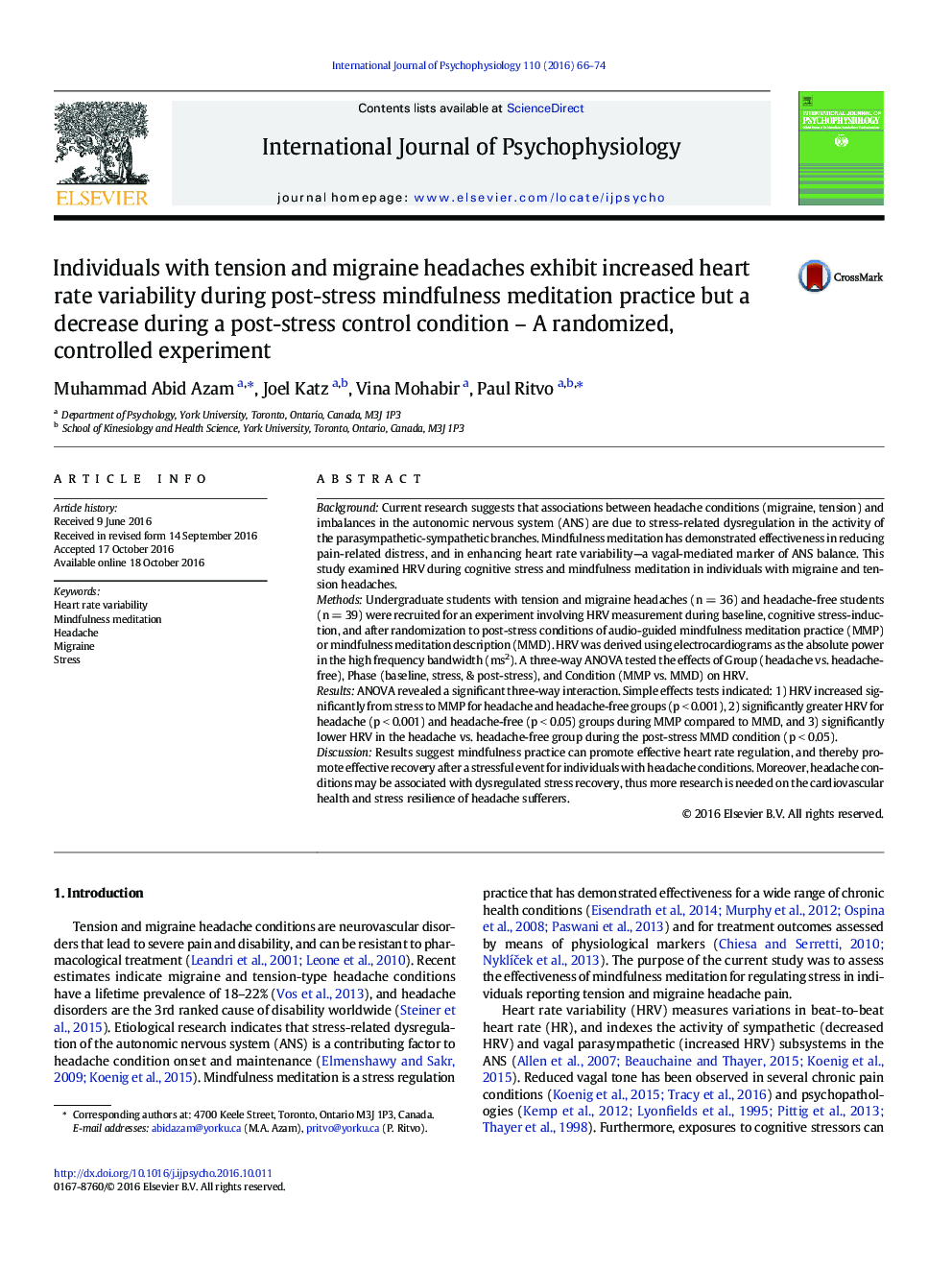| کد مقاله | کد نشریه | سال انتشار | مقاله انگلیسی | نسخه تمام متن |
|---|---|---|---|---|
| 5042384 | 1474386 | 2016 | 9 صفحه PDF | دانلود رایگان |
- Heart rate variability (HRV) was assessed in headache and headache-free groups.
- HRV increased in both groups during mindfulness meditation after cognitive stress.
- HRV decreased in headache subjects during a post-stress control condition.
- Headache participants appear at risk of post-stress parasympathetic dysregulation.
BackgroundCurrent research suggests that associations between headache conditions (migraine, tension) and imbalances in the autonomic nervous system (ANS) are due to stress-related dysregulation in the activity of the parasympathetic-sympathetic branches. Mindfulness meditation has demonstrated effectiveness in reducing pain-related distress, and in enhancing heart rate variability-a vagal-mediated marker of ANS balance. This study examined HRV during cognitive stress and mindfulness meditation in individuals with migraine and tension headaches.MethodsUndergraduate students with tension and migraine headaches (n = 36) and headache-free students (n = 39) were recruited for an experiment involving HRV measurement during baseline, cognitive stress-induction, and after randomization to post-stress conditions of audio-guided mindfulness meditation practice (MMP) or mindfulness meditation description (MMD). HRV was derived using electrocardiograms as the absolute power in the high frequency bandwidth (ms2). A three-way ANOVA tested the effects of Group (headache vs. headache-free), Phase (baseline, stress, & post-stress), and Condition (MMP vs. MMD) on HRV.ResultsANOVA revealed a significant three-way interaction. Simple effects tests indicated: 1) HRV increased significantly from stress to MMP for headache and headache-free groups (p < 0.001), 2) significantly greater HRV for headache (p < 0.001) and headache-free (p < 0.05) groups during MMP compared to MMD, and 3) significantly lower HRV in the headache vs. headache-free group during the post-stress MMD condition (p < 0.05).DiscussionResults suggest mindfulness practice can promote effective heart rate regulation, and thereby promote effective recovery after a stressful event for individuals with headache conditions. Moreover, headache conditions may be associated with dysregulated stress recovery, thus more research is needed on the cardiovascular health and stress resilience of headache sufferers.
Journal: International Journal of Psychophysiology - Volume 110, December 2016, Pages 66-74
